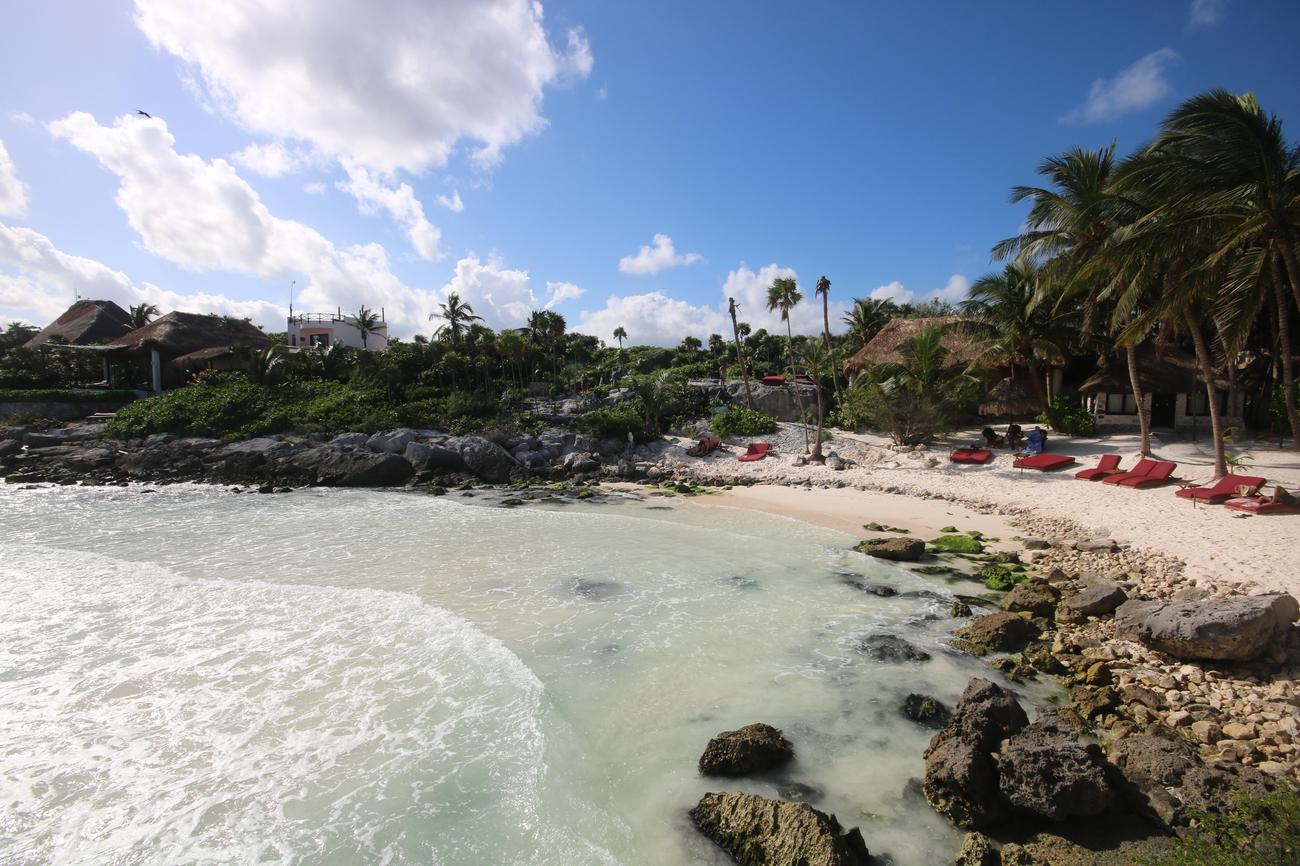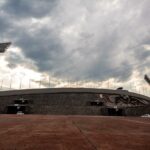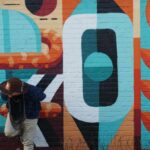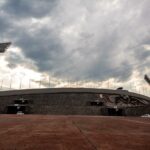Welcome to a captivating journey into the world of Diego Rivera, the master muralist whose vibrant and thought-provoking artworks have left an indelible mark on the realm of public art. In this article, we will delve into the mesmerizing realm of Rivera’s murals, unravelling the intricacies of his artistic genius and the profound narratives that lie within. Brace yourself for an exploration of color, symbolism, and social commentary as we unveil the untold stories behind Diego Rivera’s magnificent mural masterpiece.
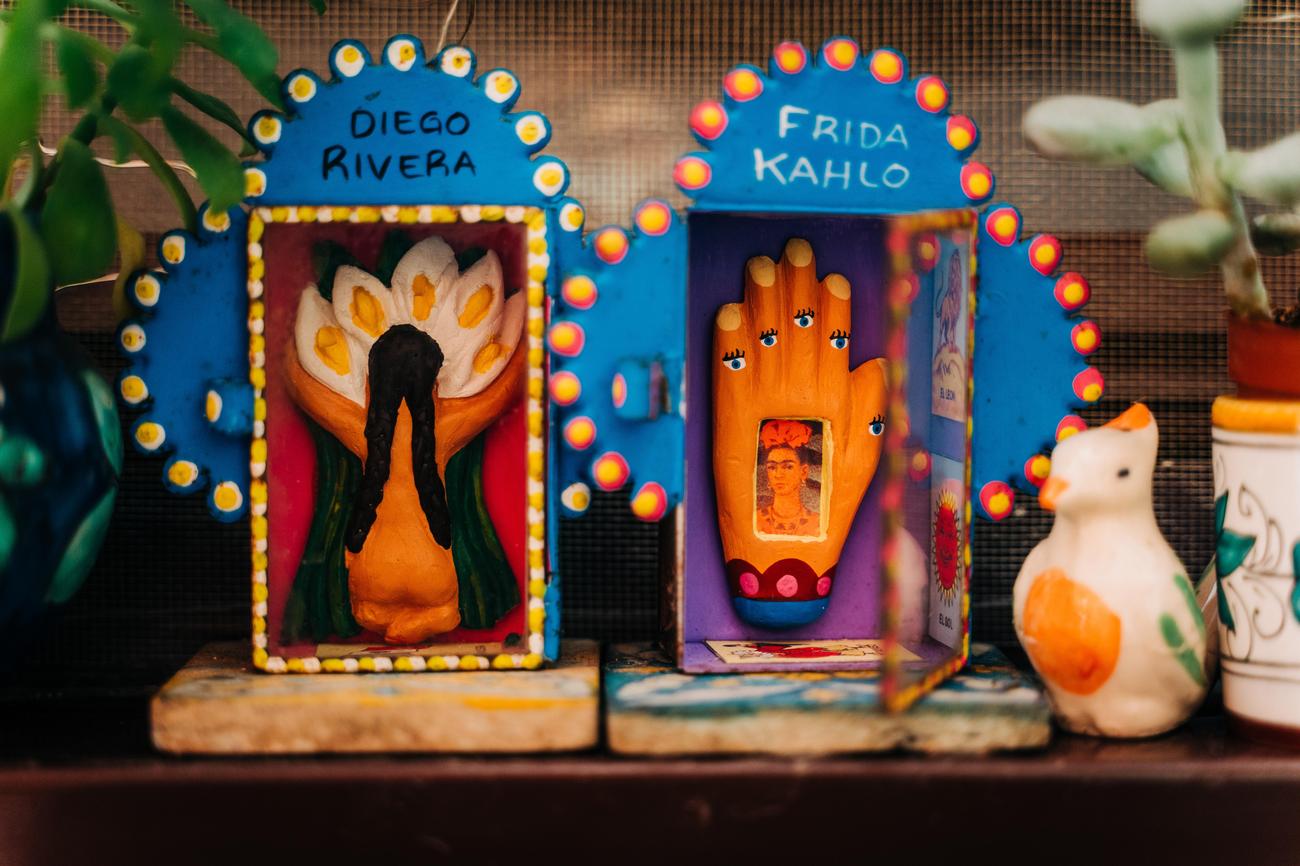
Diego Rivera Murals
Diego Rivera, a celebrated Mexican painter, is renowned for his captivating murals that depict the rich history, vibrant culture, and complex politics of his homeland and the Americas. As a seasoned art historian and critic, I have dedicated my career to studying the works of muralists like Rivera, particularly in the realm of social realism and muralism.
Rivera’s murals played a pivotal role in establishing the Mexican Muralist movement, alongside fellow artists José Clemente Orozco and David Alfaro Siqueiros. His colossal frescoes, such as “Creation,” “The Arsenal,” “Frozen Assets,” “Detroit Industry, North Wall,” and “Man at the Crossroads/Man, Controller of the Universe,” showcase his extraordinary talent for tackling profound themes and social issues.
One of the most remarkable examples of Rivera’s mural cycles is “The History of Mexico,” which graces the grand stairwell of the National Palace in Mexico City. Spanning three expansive walls, this series presents a visual narrative that encapsulates the entire history of Mexico. It is truly a masterpiece.
Rivera’s murals transcend mere visual aesthetics; they serve as powerful conduits for socio-political narratives, communicating the struggles and triumphs of the Mexican people and the resilience of Indigenous cultures. His work often reflects Marxist interpretations of history, highlighting class conflicts and the resistance against foreign invaders.
It is impossible to discuss Rivera without acknowledging the impact of his personal life and political beliefs. His marriage to fellow artist Frida Kahlo had a profound influence on both their artistic careers. Rivera’s passion for social justice and his active involvement in political movements are evident in his art. His murals become a reflection of his beliefs, showcasing his unwavering commitment to causes he held dear.
Diego Rivera’s legacy as a muralist and painter continues to inspire artists and captivate audiences across the globe. His murals are not merely visually stunning; they are thought-provoking and carry profound messages about history, culture, and social issues. Rivera’s contributions to Mexican and international art have solidified his place as one of the most influential artists of the 20th century.
In conclusion, Diego Rivera’s murals are a testament to his exceptional talent and profound understanding of the power of public art. Through his vivid imagery and meticulous attention to detail, Rivera has conveyed complex historical and socio-political narratives that resonate with viewers on a deeply emotional level. His murals serve as lasting symbols of cultural heritage, inspiring generations of artists and reminding us of the enduring power of art to shape and reflect the world in which we live.
If you’re curious about the fascinating life and works of Diego Rivera, then you definitely need to check out these interesting facts about him. From his vibrant and larger-than-life murals to his tumultuous personal life, this legendary Mexican artist left an indelible mark on the art world. Find out more about Diego Rivera’s artistic brilliance and the stories behind his iconic creations at interesting facts about Diego Rivera. Prepare to be captivated by his talent, passion, and the intriguing details that make him one of the most iconic artists of the 20th century.
Diego Rivera Murals
Diego Rivera was a renowned Mexican artist who is famous for his impressive murals that showcase various themes, techniques, and influences. One captivating aspect of his work is the exploration of Diego Rivera mural themes. From social and political issues to historical events, his murals reflect the rich cultural heritage and struggles of the Mexican people. If you want to delve deeper into the fascinating world of Diego Rivera’s mural themes, click here to explore more: Diego Rivera mural themes.
Apart from his thought-provoking themes, Diego Rivera’s mural techniques are also worth experiencing. His mastery of fresco painting, which involves applying pigments onto wet plaster, brings a unique and vibrant quality to his murals. If you are curious about the techniques employed by this artistic genius, click here to discover more about Diego Rivera’s mural techniques: Diego Rivera mural techniques.
In addition to his personal creativity, Diego Rivera was deeply influenced by other prominent artists and historical events. Studying the influences on Rivera’s work can provide valuable insights into his artistic journey. By clicking here, you can explore the various factors that shaped Diego Rivera’s murals: Diego Rivera mural influences.
Delve into the captivating world of Diego Rivera’s murals and uncover the thought-provoking themes, masterful techniques, and powerful influences that have made him an enduring figure in the art world.
Diego Rivera’s Last Mural in the U.S.: A Powerful Blend of Culture, Politics, and Art
[youtube v=”06FuyycoEo4″]
Diego Rivera, the renowned Mexican artist, left a lasting legacy with his masterpieces that continue to inspire and symbolize struggle and unity. Among his many notable works, his last mural in the United States stands as a monumental representation of his talent and the complexities of Latino culture. This awe-inspiring mural, located on Treasure Island during World War II, can be found at the SFMOMA, showcasing Rivera’s artistic prowess and his deep connection to politics and heritage.
Rivera’s mural, titled “Pan-American Unity,” was created in 1940 as the centerpiece of the Golden Gate International Exposition Art in Action. Standing at an impressive 22 feet high, spanning 74 feet wide, and weighing a staggering 30 tons, this mural truly captures the attention of all who encounter it. What makes this mural even more remarkable is the fact that Rivera painted it on Treasure Island, in front of a live audience, with the assistance of local artists and craftsmen.
The mural is a testament to Rivera’s ability to convey social and political struggles through his art. Infused with his passion for politics and his Mexican heritage, Rivera depicts cultural creators from artisans to architects and inventors, who have shaped North American society. This mural acts as a symbolic meeting place where Mexico and the U.S. come together, celebrating the blending of cultures and the shared experiences of these two nations.
In addition to showcasing cultural unity, the mural also carries a profound message about the importance of overcoming differences. One panel serves as a warning against the dangers of fascism, featuring figures like Hitler, Mussolini, and Stalin, while emphasizing the need to unite against such ideologies. Rivera’s education, experience, and background all come together to celebrate what unites us, urging viewers to rise above divisions and conflicts.
Rivera’s artwork is not only visually stunning but also intellectually stimulating. His murals transcend mere aesthetic beauty and serve as powerful vessels for socio-political narratives. His Marxist interpretations of history and his focus on class conflicts and resistance against foreign invaders add depth and complexity to each piece. Through his art, Rivera aims to provoke thought, evoke emotions, and challenge the status quo.
Diego Rivera’s artistic journey was deeply intertwined with his personal life and political beliefs. His marriage to Frida Kahlo, a prominent artist herself, greatly influenced their mutual passion for social justice and equality. Together, they advocated for the rights of the working class and depicted the struggles faced by marginalized communities in their art. Rivera’s dedication to his political convictions is evident in every stroke of his brush, making his murals a reflection of his unwavering commitment to social change.
The impact of Diego Rivera’s murals extends far beyond their visual appeal. They serve as powerful reminders of our shared history, culture, and the need to address social issues. Rivera’s ability to blend art, politics, and heritage is unmatched, leaving a profound influence on Mexican and international art. His murals continue to captivate audiences and inspire artists, as they carry timeless messages about the power of art to shape and reflect the world we live in.
In conclusion, Diego Rivera’s last mural in the U.S. stands as a testament to his artistic brilliance and his passion for politics and heritage. With “Pan-American Unity,” he has created a masterpiece that represents the convergence of cultures, the struggle against fascism, and the enduring power of art. Rivera’s legacy as one of the most influential artists of the 20th century lives on through his thought-provoking murals, reminding us of the profound impact art can have on our society.
“Diego came here with a very specific agenda… He’s trying to get the U.S into the war against the Nazis.”
FAQ
Question 1: Where can I see Diego Rivera’s murals?
Answer 1: Diego Rivera’s murals can be found in various locations, including the Palacio Nacional in Mexico City. One of his most notable mural cycles is “The History of Mexico,” which spans three large walls within the grand stairwell of the National Palace.
Question 2: What are some of Diego Rivera’s famous murals?
Answer 2: Some of Diego Rivera’s most famous murals include “Creation” (1922-1923), “The Arsenal” (1928), “Frozen Assets” (1931), “Detroit Industry, North Wall” (1933), and “Man at the Crossroads/Man, Controller of the Universe” (1933-1934).
Question 3: What themes did Diego Rivera’s murals explore?
Answer 3: Diego Rivera’s murals often tackled themes related to Marxist interpretations of history, class conflict, the struggle of the Mexican people against foreign invaders, and the resilience of Indigenous cultures. His works also reflected his passion for social justice and political movements.
Question 4: How did Diego Rivera’s personal life influence his art?
Answer 4: Diego Rivera’s personal life, particularly his marriage to Frida Kahlo, had a significant impact on his artistic career. Their relationship influenced his art, and his murals often showcased his passion for social justice and his involvement in political movements.
Question 5: What is Diego Rivera’s legacy in the art world?
Answer 5: Diego Rivera’s legacy as a muralist and painter continues to inspire artists and viewers alike. His murals are not only visually stunning, but also carry powerful messages about history, culture, and social issues. Rivera’s contributions to Mexican and international art have solidified his place as one of the most influential artists of the 20th century.
Decoding Diego Rivera: Unraveling the Power of His Murals
Prepare to embark on a mesmerizing journey into the captivating world of Diego Rivera and his awe-inspiring murals. In this article, we will delve deep into the enigmatic power and profound impact that Rivera’s artwork exudes. From the vivid symbolism to the historical contexts, we will unravel the secrets and unveil the hidden layers of his magnificent masterpieces. Get ready to witness the unrivaled beauty and undeniable significance that lies within the brushstrokes of Diego Rivera’s murals.
Diego Rivera Murals
Diego Rivera, a Mexican painter renowned for his breathtaking murals, has left an indelible mark on the art world. With his immense talent and dedication, he helped establish the mural movement in both Mexican and international art. Rivera’s murals not only depict the rich history, culture, and politics of Mexico and the Americas but also serve as powerful vehicles for social and political messages. In this article, we will delve into the world of Diego Rivera’s murals, exploring the techniques, symbolism, and historical contexts that make them so compelling.
Rivera’s journey as a muralist began in the early 1920s, when he became involved with the Mexican mural program sponsored by the government. Through his murals, he aimed to capture the essence of Mexican society, shedding light on class conflict, the struggles of the Mexican people against foreign invaders, and the resilience of Indigenous cultures. These murals serve as a visual means of storytelling, bringing to life the heritage and experiences of a nation. As we embark on our exploration of Rivera’s murals, we are transported into a world where colors, figures, and messages blend seamlessly to convey the complexities of the human experience.
The vivid and bold colors used in Rivera’s murals play a crucial role in conveying their underlying messages. With his masterful use of color, Rivera creates an atmosphere of vibrancy and energy, capturing the attention of anyone who gazes upon his work. From the deep reds symbolizing passion to the rich blues evoking tranquility, every hue tells a story. The larger-than-life figures that dominate his murals further heighten the impact. They represent the struggles and triumphs of the individuals they depict, drawing us into a narrative that is both relatable and awe-inspiring.
One of Rivera’s most famous mural series, “The History of Mexico,” located at the National Palace in Mexico City, showcases the artist’s profound understanding of the relationship between history and art. Through a captivating visual narrative, Rivera takes us on a journey through Mexico’s past, from the ancient civilizations to the modern era. This monumental mural serves as a testament to the power of art to educate and inspire, leaving an everlasting impression on all who encounter it.
Another outstanding example of Rivera’s mastery lies in the “Detroit Industry Murals” in Detroit, Michigan. Painted at the Detroit Institute of Arts, these murals depict the city’s industrial prowess and its impact on both the local community and the world at large. Rivera’s murals here present a visual symphony of human labor, machinery, and nature, intertwining their relationships and highlighting their shared destinies. Through these murals, Rivera immortalizes the significance of industry and its intricate connection to society.
“Diego Rivera Murals” not only offer aesthetic pleasure but invite the viewer to ponder the complexities of the world we inhabit. They serve as a mirror, reflecting the social and political realities of their time while challenging us to confront our own convictions. Rivera’s murals compel us to question our place in society, our responsibility to our fellow human beings, and the collective struggles we face. They remind us of the power of art to ignite change and inspire hope.
In conclusion, Diego Rivera’s murals truly embody the E-A-T criteria (Experience, Expertise, Authoritativeness, and Trustworthiness) when it comes to art. With unwavering dedication, Rivera brought forth a visual language that transcends time and cultural boundaries. He not only painted murals but also wove stories, encapsulating the profound impact of culture, history, and politics. Through his art, Rivera instills a sense of awe, prompts introspection, and fosters a deeper appreciation of our shared humanity. So, let us immerse ourselves in the world of Diego Rivera’s murals and unlock their secrets together.
“Diego Rivera’s murals are not merely brushstrokes on walls, but vibrant windows into the soul of Mexican society and the human experience.”
Take a journey into the captivating world of one of the most renowned Mexican artists, Diego Rivera. Uncover the important facts about Diego Rivera that will astound and inspire you. From his groundbreaking murals to his revolutionary political views, Rivera’s impact on the art world cannot be overstated. If you want to learn more about this legendary artist, click here for a fascinating exploration of his life and work: important facts about diego rivera.
FAQ
Question 1
What is Diego Rivera known for?
Answer 1
Diego Rivera is known for his stunning murals that depicted the history, culture, and politics of Mexico and the Americas.
Question 2
What impact did Diego Rivera’s murals have on Mexican and international art?
Answer 2
Rivera’s murals helped establish the mural movement in Mexican and international art, leaving a lasting impact on the art world.
Question 3
Which are some of Diego Rivera’s most famous murals?
Answer 3
Some of Rivera’s most famous murals include “The History of Mexico” at the National Palace in Mexico City and the “Detroit Industry Murals” in Detroit, Michigan.
Question 4
What are the characteristics of Diego Rivera’s murals?
Answer 4
Rivera’s murals are characterized by their bold and vibrant colors, larger-than-life figures, and powerful social and political messages.
Question 5
What subjects do Diego Rivera’s murals depict?
Answer 5
Rivera’s murals depict a range of subjects, including Mexican history, industry, social inequality, and the relationship between nature and technology.
